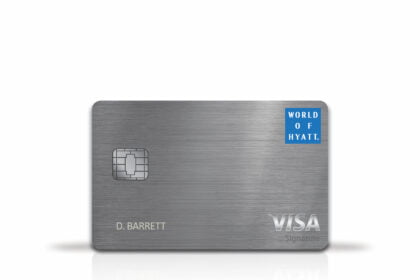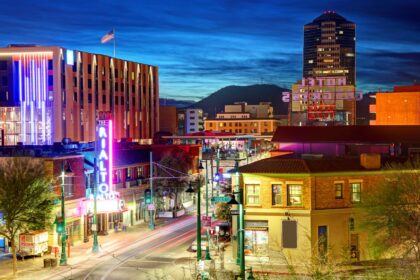There’s something magical about combining the freedom of a road trip with the culinary adventure of coastal seafood. America’s coastlines offer incredible opportunities to follow seafood trails that connect fishing villages, seaside restaurants, and local markets, creating unforgettable journeys where the destination is as delicious as it is beautiful. From Maine’s legendary lobster rolls to the Pacific Northwest’s fresh Dungeness crab, these five coastal seafood trails offer the perfect blend of scenic drives, authentic local culture, and incredible dining experiences.
What Makes a Great Seafood Trail?
The best seafood trails combine several key elements: authentic fishing communities where seafood is caught daily, diverse dining options from casual shacks to upscale restaurants, scenic coastal drives that showcase natural beauty, and cultural experiences that tell the story of local maritime traditions. Great seafood trails also offer variety—different preparation styles, seasonal specialties, and opportunities to meet the fishermen, chefs, and families who make these coastal communities special.
The most memorable seafood trails are those where you can experience the entire journey from boat to plate, visiting working harbors, talking with local fishermen, exploring fish markets, and dining at restaurants that have been serving the same families for generations.
1. Maine’s Legendary Lobster Trail: Down East Coastal Route
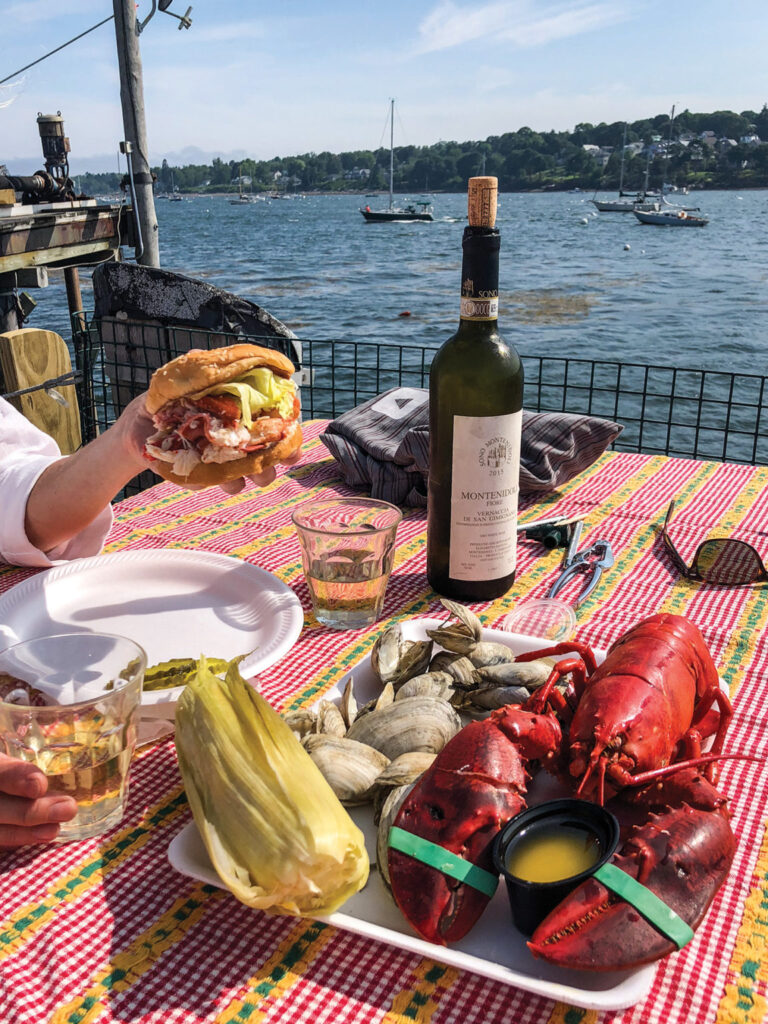
Route: Portland to Bar Harbor via Route 1 (approximately 280 miles) Best Time: June through October for peak lobster season Duration: 5-7 days for full experience
Maine’s lobster trail along Route 1 represents America’s most iconic seafood road trip. This journey takes you through quintessential New England fishing villages where lobster boats dot picturesque harbors and the smell of fresh sea air mixes with the aroma of steaming lobster.
Must-Stop Destinations
Portland’s Old Port District Start your journey in Maine’s foodie capital, where innovative chefs are reimagining traditional lobster dishes. Visit the Portland Fish Pier early morning to watch lobster boats unload their catch, then head to Holy Donut for potato donuts made with Maine potatoes, followed by a lobster benedict at Duckfat.
Freeport – Home of L.L.Bean and Incredible Lobster Beyond the famous outdoor retailer, Freeport offers Harraseeket Lunch & Lobster, where you can enjoy fresh lobster while watching boats come and go in the working harbor. The lobster roll here is consistently rated among Maine’s best, served on a toasted hot dog bun with just a touch of mayo.
Bath – Maine Maritime Museum and Lobster Shacks This shipbuilding town offers both maritime history and exceptional seafood. Mae’s Cafe serves lobster omelets that locals swear by, while the Bath Farmers Market (Saturdays) features fresh lobster and other local seafood direct from fishermen.
Damariscotta – Oyster Capital of Maine While known for oysters, Damariscotta’s Shaw’s Wharf offers some of the state’s best lobster in a casual waterfront setting. The lobster stew here is legendary, and you can often watch lobstermen sorting their catch right outside the restaurant windows.
Camden – Picturesque Harbor Town This postcard-perfect town offers upscale lobster dining with stunning harbor views. Waterfront Restaurant serves lobster prepared multiple ways, from classic boiled to lobster mac and cheese, all while overlooking Camden Harbor’s schooner fleet.
Bar Harbor – Gateway to Acadia End your trail in this tourist hub where numerous restaurants compete to serve the best lobster. Jordan Pond House, located within Acadia National Park, offers lobster stew with a side of popovers and mountain views.
Trail Highlights and Local Specialties
Classic Maine Lobster Roll: The Connecticut-style (warm with butter) versus Maine-style (cold with mayo) debate plays out along the entire trail.
Lobster Mac and Cheese: Many restaurants offer their own twist on this comfort food classic.
Lobster Stew: A creamy, rich soup that’s perfect for cooler coastal evenings.
Steamed Clams: Often served as appetizers, these soft-shell clams are steamed and served with drawn butter and clam broth.
Insider Tips for the Maine Lobster Trail
Visit lobster shacks early in the day when the lobster is freshest and before tourist crowds arrive. Many of the best spots are cash-only, so come prepared. Don’t miss the opportunity to buy live lobsters at roadside stands—many will steam them for you on the spot.
2. Chesapeake Bay Blue Crab Circuit: Maryland and Virginia
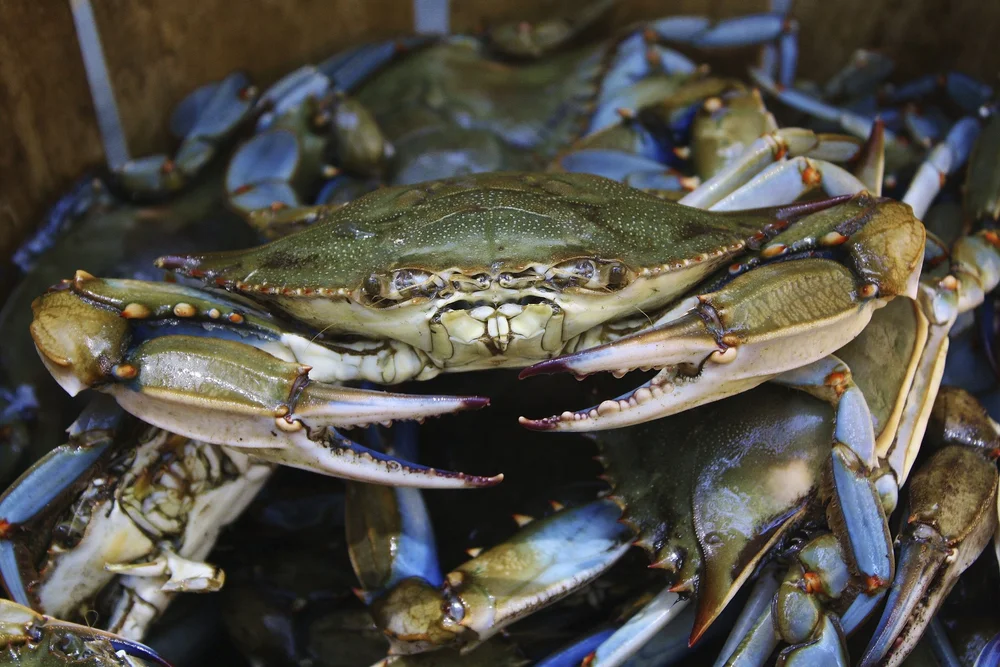
Route: Baltimore to Virginia Beach via Chesapeake Bay Bridge (approximately 250 miles) Best Time: May through October for peak crab season Duration: 4-6 days
The Chesapeake Bay produces nearly half of America’s blue crab harvest, and this trail takes you through historic fishing communities, crab houses, and scenic waterways where blue crab is not just food—it’s a way of life.
Essential Stops Along the Bay
Baltimore’s Inner Harbor Begin at Phillips Seafood, a Baltimore institution since 1956, where you can learn proper crab-picking technique while enjoying steamed blue crabs with Old Bay seasoning. The National Aquarium nearby offers exhibits on Chesapeake Bay marine life.
Annapolis – Sailing Capital and Crab Haven This historic naval town offers Cantler’s Riverside Inn, where generations of families have gathered around brown paper-covered tables to pick crabs. The restaurant sits right on Mill Creek, and you can watch boats bringing in fresh catch.
St. Michaels – Maritime Heritage Home to the Chesapeake Bay Maritime Museum, St. Michaels offers both history and exceptional seafood. The Crab Claw Restaurant provides waterfront dining with views of the Miles River and some of the bay’s best crab cakes.
Cambridge – Working Waterman’s Town This authentic fishing community offers a glimpse into traditional crab fishing life. Suicide Bridge Restaurant serves massive platters of steamed crabs in a casual, local atmosphere where watermen often stop for lunch.
Virginia Beach – Southern Bay Style End your journey with Virginia’s take on blue crab at Waterman’s Surfside Grille, where crab cakes are served with a Southern twist and views of the Atlantic Ocean.
Chesapeake Bay Crab Specialties
Steamed Blue Crabs: Whole crabs steamed with Old Bay seasoning, served on brown paper with mallets and picks.
Crab Cakes: Maryland-style (minimal filler, maximum crab) versus Virginia-style (often with different seasonings).
Soft-Shell Crabs: Available during molting season (May-September), served whole and fried.
She-Crab Soup: A creamy soup with crab meat and crab roe, especially popular in Virginia.
Crab Imperial: Baked crab meat with seasonings, a Chesapeake Bay specialty.
Cultural Experiences
Visit working crab houses where you can watch crabs being steamed and picked. Many restaurants offer crab-picking lessons for beginners. Don’t miss crab festivals throughout the summer, where local communities celebrate their maritime heritage.
READ ALSO: America’s Best Beach Towns to Visit This Summer
3. Carolina Coast Shrimp and Grits Trail: The Lowcountry Adventure
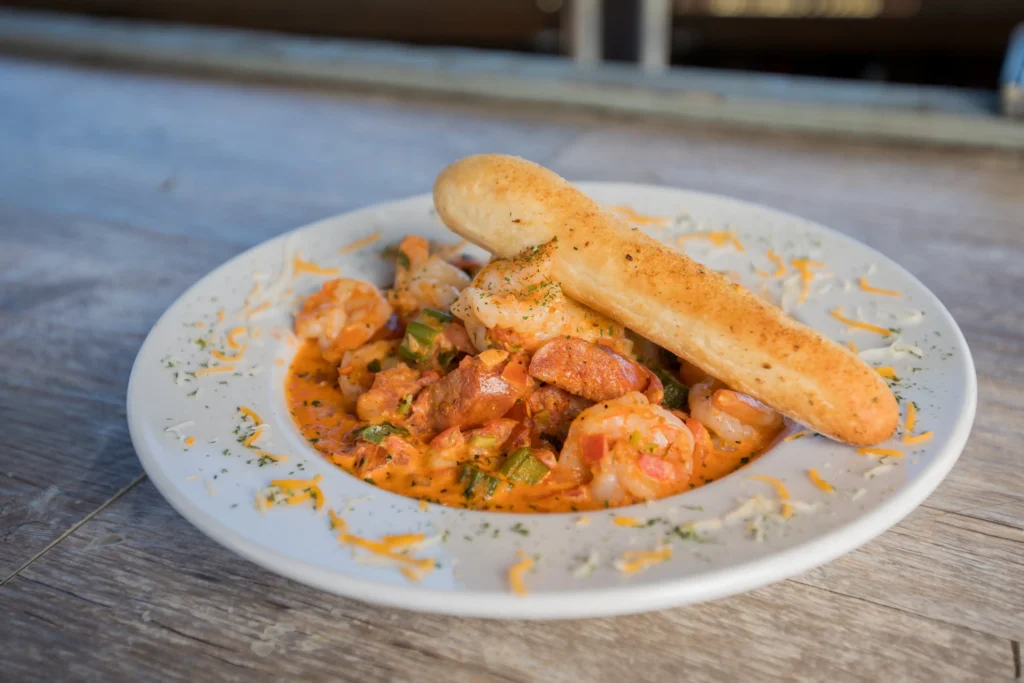
Route: Wilmington, NC to Savannah, GA via Highway 17 (approximately 350 miles) Best Time: April through October for peak shrimp season Duration: 5-7 days
This trail explores the Lowcountry’s signature dish while traveling through some of America’s most beautiful coastal landscapes, from the Outer Banks to the Georgia marshlands.
Key Destinations
Wilmington, North Carolina – Cape Fear River Start at Catch Restaurant for innovative shrimp preparations with local ingredients. The historic downtown riverfront provides beautiful views and multiple dining options showcasing local shrimp.
Myrtle Beach, South Carolina – Grand Strand The Sea Captain’s House offers traditional shrimp and grits in a historic oceanfront setting. Their version features local creek shrimp over stone-ground grits with tasso ham gravy.
Charleston, South Carolina – Lowcountry Capital Charleston’s culinary scene has elevated shrimp and grits to an art form. Husk serves heritage grits with local shrimp, while Hominy Grill offers the classic comfort food version that locals love.
Beaufort, South Carolina – Historic Waterfront This charming town offers Saltus River Grill, where shrimp boats dock just steps from your table. Their shrimp and grits feature locally caught shrimp and Anson Mills grits.
Savannah, Georgia – Southern Hospitality End at The Olde Pink House, where shrimp and grits are served in an elegant 18th-century mansion, or The Grey for a modern take on this classic dish.
Lowcountry Seafood Specialties
Shrimp and Grits: The signature dish, prepared differently at each stop with local variations.
She-Crab Soup: Creamy soup with lump crab meat and a splash of sherry.
Lowcountry Boil: Also called Frogmore Stew, featuring shrimp, sausage, corn, and potatoes.
Fried Green Tomatoes with Shrimp: A Southern twist on the classic dish.
Oyster Roasts: Especially popular in fall and winter months.
Cultural Immersion
Visit shrimp docks early morning to watch boats unload their catch. Many restaurants source directly from local shrimpers, and chefs are often happy to discuss their suppliers and preparation methods.
4. Pacific Northwest Salmon and Crab Adventure: Washington and Oregon
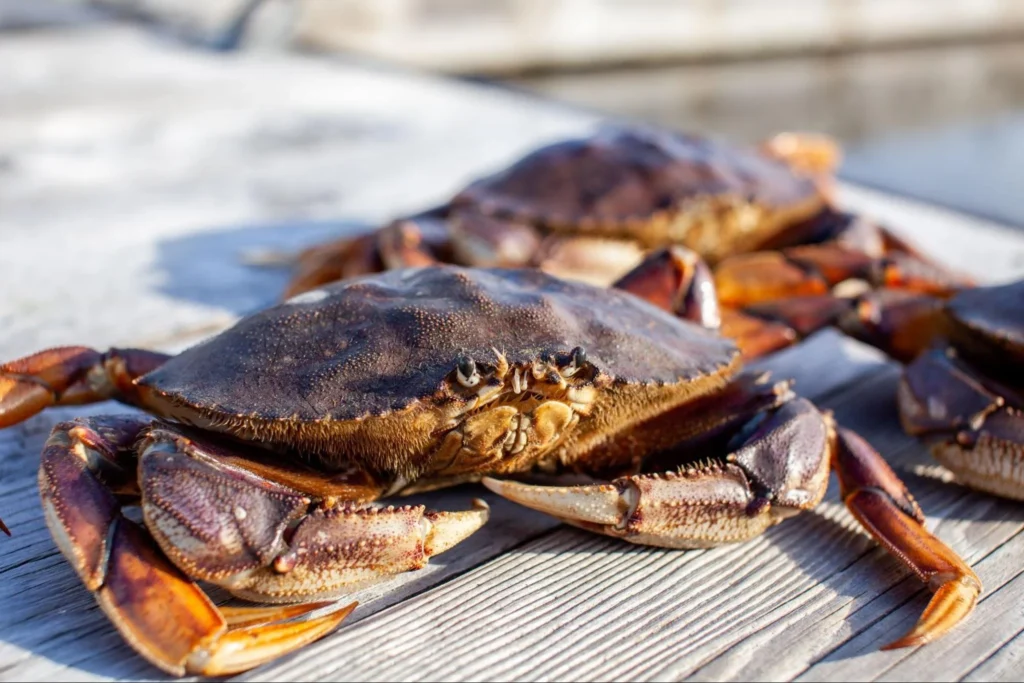
Route: Seattle to Newport, Oregon via Highway 101 (approximately 450 miles) Best Time: May through September for best weather and fishing Duration: 6-8 days
This trail combines the Pacific Northwest’s incredible salmon runs and Dungeness crab season with dramatic coastal scenery and innovative culinary scenes.
Must-Experience Stops
Seattle – Pike Place Market and Waterfront Begin at Pike Place Fish Market for the famous fish-throwing show, then visit Elliott’s Oyster House for Dungeness crab and Pacific salmon with views of Elliott Bay.
Westport, Washington – Surfside Resort This fishing village offers Mo’s Restaurant, famous for its Dungeness crab sandwiches and clam chowder. Watch charter boats return with salmon and bottom fish catches.
Long Beach Peninsula, Washington – Razor Clam Capital The Depot Restaurant in Seaview serves razor clam chowder and fresh salmon in a restored 1920s train depot. Time your visit during razor clam digging season for the full experience.
Astoria, Oregon – Columbia River Mouth This historic port city offers Bowpicker Fish & Chips, serving fresh albacore tuna fish and chips from a converted gillnet boat, plus traditional salmon preparations.
Newport, Oregon – Bayfront District End at Mo’s Restaurant (the original location) for clam chowder and Dungeness crab, or visit Local Ocean Seafoods for sustainable, locally-caught fish prepared with innovative techniques.
Pacific Northwest Seafood Specialties
Wild Pacific Salmon: Chinook, Coho, and Sockeye prepared grilled, cedar-plank, or smoked.
Dungeness Crab: Sweet, delicate crab meat served simply steamed or in crab cakes.
Pacific Oysters: Fresh or grilled with various preparations.
Razor Clams: Unique to the region, often served fried or in chowder.
Albacore Tuna: Locally caught and served ultra-fresh.
Seasonal Considerations
Salmon runs vary by species and location throughout the season. Dungeness crab season typically runs December through August. Plan your trip timing based on which seafood experiences are most important to you.
5. Gulf Coast Oyster and Shrimp Trail: Louisiana to Florida
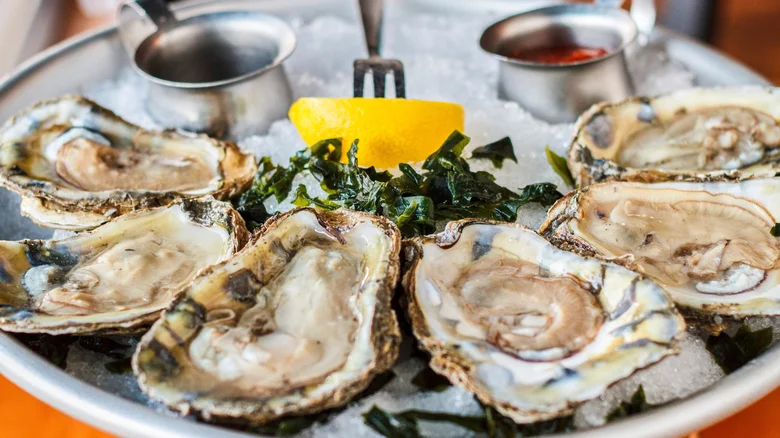
Route: New Orleans to Apalachicola, Florida via Highway 90 (approximately 400 miles) Best Time: October through April for peak oyster season Duration: 6-8 days
This trail explores the Gulf of Mexico’s incredible seafood diversity, from Louisiana’s famous oyster bars to Florida’s pristine bay scallops, with stops in charming coastal communities.
Essential Gulf Coast Stops
New Orleans, Louisiana – Crescent City Start at Acme Oyster House for chargrilled oysters and Po’ boys, then visit GW Fins for upscale preparations of Gulf seafood. Don’t miss a visit to the French Market for fresh seafood vendors.
Grand Isle, Louisiana – Barrier Island Fishing Village This authentic fishing community offers The Lighthouse Restaurant, where shrimp boats dock right outside and the seafood couldn’t be fresher.
Orange Beach, Alabama – The Wharf The Flora-Bama Oyster Bar offers live music and fresh Gulf oysters, while nearby restaurants serve some of the Gulf’s best red snapper and grouper.
Pensacola, Florida – Historic Downtown Jackson’s Steakhouse offers upscale Gulf seafood preparations, while Joe Patti’s Seafood Market provides an incredible selection of fresh local catch.
Apalachicola, Florida – Oyster Capital End at Up the Creek Raw Bar for fresh Apalachicola Bay oysters, considered among America’s best, served raw, steamed, or chargrilled.
Gulf Coast Seafood Specialties
Chargrilled Oysters: New Orleans-style with garlic, butter, and herbs.
Gulf Shrimp: Large, sweet shrimp prepared in countless ways.
Red Snapper: Gulf specialty, often blackened or grilled whole.
Bay Scallops: Apalachicola Bay produces exceptional sweet scallops.
Crawfish: Louisiana’s signature crustacean (seasonal, typically spring).
Cultural Experiences
Visit working oyster boats and processing facilities. Many restaurants offer tours of their facilities and discussions about sustainable Gulf seafood practices.
Planning Your Coastal Seafood Trail Adventure
Essential Preparation Tips
Research Seasonal Availability: Different seafood peaks at different times. Plan your route based on when your preferred seafood is in season.
Make Reservations: Popular seafood restaurants, especially in tourist areas, book up quickly during peak season.
Bring Cash: Many authentic seafood shacks and markets are cash-only operations.
Pack Appropriately: Comfortable clothes you don’t mind getting messy, and layers for changing coastal weather.
Budget Considerations
Seafood trails can accommodate various budgets. Casual shacks and fish markets offer incredible value, while upscale restaurants provide refined experiences. Plan a mix of both for the full experience.
Transportation and Accommodation
Vehicle Preparation: Ensure your car is in good condition for coastal driving, and consider bringing a cooler for fresh seafood purchases.
Accommodation Strategy: Book coastal accommodations well in advance, especially during peak seafood seasons. Consider vacation rentals with kitchens to prepare fresh seafood purchases.
Sustainable Seafood Travel
Support Local Fishermen: Buy directly from boats and local markets when possible.
Ask About Sourcing: Choose restaurants that source locally and sustainably.
Learn About Conservation: Many stops offer educational opportunities about marine conservation and sustainable fishing practices.
Making the Most of Your Seafood Trail Experience
Photography and Documentation
Create a food diary with photos of each dish and notes about preparation styles and flavors. Many restaurants are happy to share preparation techniques and sourcing information.
Local Connections
Talk with fishermen, restaurant owners, and locals to learn about traditional preparations and family recipes. These conversations often lead to the most authentic and memorable experiences.
Seasonal Events
Many coastal communities host seafood festivals during peak seasons. Time your trip to coincide with these celebrations for the full cultural experience.
Health and Safety Considerations
Seafood Safety
Freshness Indicators: Look for clear eyes in whole fish, firm flesh, and ocean-fresh smell.
Restaurant Selection: Choose busy restaurants with high turnover for the freshest seafood.
Shellfish Precautions: Be aware of red tide and other seasonal shellfish warnings.
Travel Safety
Coastal Weather: Monitor weather conditions, especially during hurricane season in Gulf and Atlantic regions.
Road Conditions: Coastal roads can be affected by tides, storms, and seasonal closures.
Conclusion
These five coastal seafood trails offer incredible opportunities to experience America’s maritime culture through its most delicious lens. From the rocky shores of Maine where lobstermen haul traps at dawn to the Gulf Coast marshlands where oyster boats work the shallow waters, each trail tells the story of communities built around the sea’s bounty.
The beauty of seafood trails lies not just in the incredible food, but in the complete experience—meeting the people who catch, prepare, and serve the seafood, learning about traditional techniques and modern innovations, and experiencing the natural beauty of America’s diverse coastlines. Whether you’re cracking Maine lobster on a weathered dock or slurping fresh oysters while watching a Gulf Coast sunset, these trails create memories that last a lifetime.
Plan your coastal seafood trail adventure today. Research seasonal availability for your chosen route, make restaurant reservations for must-visit spots, and prepare for a culinary journey that will forever change how you think about American seafood. The boats are going out, the catch is coming in fresh, and your table is waiting at some of America’s most authentic and delicious seafood destinations.



